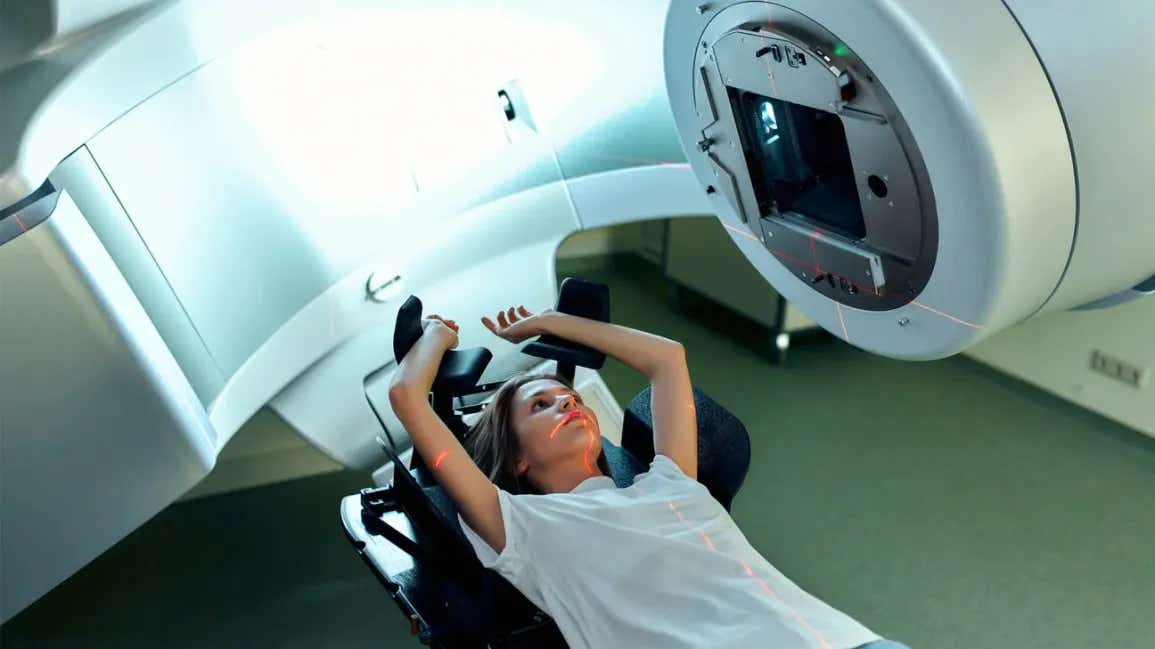Gel derived from cow mucus could revolutionize spinal cord treatment
Researchers have developed a gel inspired by cow mucus to protect spinal discs after surgery, potentially revolutionizing disc herniation treatment by preventing immune system damage.

When applied after surgery, the mucin gel creates a protective barrier around the spinal discs, shielding them from the immune system. (CREDIT: CC BY-SA 3.0)
Researchers at Uppsala University have pioneered a gel that could revolutionize the treatment of disc herniation. The inspiration for this innovation comes from an unlikely source—cow mucus.
When applied after surgery, the mucin gel creates a protective barrier around the spinal discs, shielding them from the immune system. This approach prevents the immune system from attacking the soft core of the discs, known as the nucleus pulposus, which often leads to additional damage post-surgery.
Disc herniation is a widespread issue, responsible for causing debilitating pain and limiting spinal function. The most common solution for severe cases is surgery, where the herniated disc is removed to relieve pressure on the spinal nerves.
However, despite the initial relief, the healing process can become complicated when the immune system starts to attack the remaining disc tissue, leading to chronic pain and further complications. Traditionally, patients rely on anti-inflammatory medications or steroid injections after surgery, but these treatments don't address the core issue—how to stop the immune system from contributing to the damage.
Hongji Yan, a researcher at the Department of Medical Cell Biology at Uppsala University and AIMES at Karolinska Institutet, explains that this new approach is a game-changer. “This new approach offers hope for those suffering from back pain caused by disc herniation and may prevent further damage after removing herniated discs, potentially improving the quality of life for the patients,” Yan notes.
Related Stories:
His team’s findings were published in the journal Advanced Science, showing promising results that could significantly impact post-surgical care.
Currently, most research in this field aims at regenerating damaged spinal discs. However, this presents significant challenges because the intervertebral discs lack blood vessels, have relatively few cells, and are constantly under mechanical stress. These factors make regeneration difficult and explain why therapies focused solely on rebuilding damaged tissue have yet to yield consistent results.
The innovation from Uppsala University takes a different approach—prevention. Instead of trying to rebuild the disc, the team developed a synthetic mucin gel inspired by the protective mucus layer found in certain parasites. Parasites often evade the immune system by using mucus to cloak themselves, preventing immune cells from identifying and attacking them.
By mimicking this natural defense, the researchers created a gel that shields the remaining disc tissue post-surgery, protecting it from immune system attacks. This is particularly critical because the immune response often worsens the damage, leading to more pain and a higher likelihood of re-injury.
In the study, the mucin gel was tested against other materials traditionally used as physical barriers, such as alginate gels. Unlike alginate, which merely acts as a structural barrier, the mucin gel offers immune-suppressive properties, effectively reducing immune cell activity at the surgical site.
This protective measure ensures that the soft, inner core of the intervertebral disc, the nucleus pulposus, remains intact, reducing the likelihood of long-term complications.
Yan is optimistic about the potential of this technology. “This approach could have a major impact on surgical procedures, as a simple injection of mucin gels at the surgical site could improve patient outcomes, reduce the risk of long-term complications, and increase the overall success rate of disc surgery,” he says.
The significance of this discovery goes beyond pain relief. Chronic back pain is a leading cause of disability worldwide, and herniated discs are a major contributor. Current treatments often leave patients with lingering pain or long-term reliance on medications that come with side effects. By addressing the immune system’s role in post-surgical damage, this gel could reduce the need for additional surgeries or long-term pain management strategies, improving patients’ quality of life.
This collaborative effort wasn’t limited to Uppsala University. Teams led by Song Chen and Bin Li from Soochow University in China, and João F. Mano from the University of Aveiro in Portugal, contributed to this breakthrough. Their collective work could reshape the way surgeons approach disc herniation treatments in the future, with the potential to offer a more holistic post-surgical care option that addresses the root cause of recurring pain and complications.
As back pain continues to affect millions, innovations like this gel provide much-needed hope for those seeking relief from chronic discomfort and life-altering spinal injuries. With more research and clinical trials, the gel may one day become a routine part of spinal surgeries, preventing the cascade of immune-driven complications that currently plague so many patients after their operations.
Note: Materials provided above by The Brighter Side of News. Content may be edited for style and length.
Like these kind of feel good stories? Get The Brighter Side of News' newsletter.
Joshua Shavit
Science & Technology Writer | AI and Robotics Reporter
Joshua Shavit is a Los Angeles-based science and technology writer with a passion for exploring the breakthroughs shaping the future. As a contributor to The Brighter Side of News, he focuses on positive and transformative advancements in AI, technology, physics, engineering, robotics and space science. Joshua is currently working towards a Bachelor of Science in Business Administration at the University of California, Berkeley. He combines his academic background with a talent for storytelling, making complex scientific discoveries engaging and accessible. His work highlights the innovators behind the ideas, bringing readers closer to the people driving progress.



